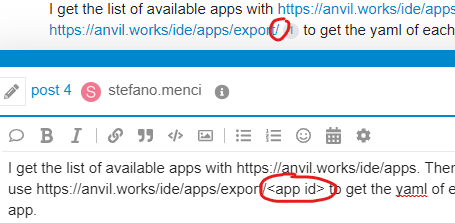What I’m trying to do:
I’ve been building a simple dashboard which allows a user to easily browse and (if authorised) launch one of many Anvil apps I’ve been tinkering with over the previous months. The cloned app below shows the basic concept.
As you’ll see from the clone, I’m currently hard coding the App Name and URL inside the client code, which is tedious and will need to be maintained if I change either the name or url in future.
So… I was just wondering if there was a way to programmatically fetch a list of my apps from https://anvil.works/build#page:apps along with other metadata such as the URL, date created etc. or even an Anvil API?
If not, please could this question be moved to Feature Requests?
What I’ve tried and what’s not working:
I’ve tried searching this forum for “my apps” “new apps” etc but no joy so far.
I’ve considered periodically scraping the data using selenium but that defeats the appeal of offering a web app in the first place and at my current skill level would take longer to code than manually copy/paste.
Clone link:
https://anvil.works/build#clone:J4ZFO5XHKWSVPK3K=4VG6JPDPZC2SVWMROS4VVDLF
